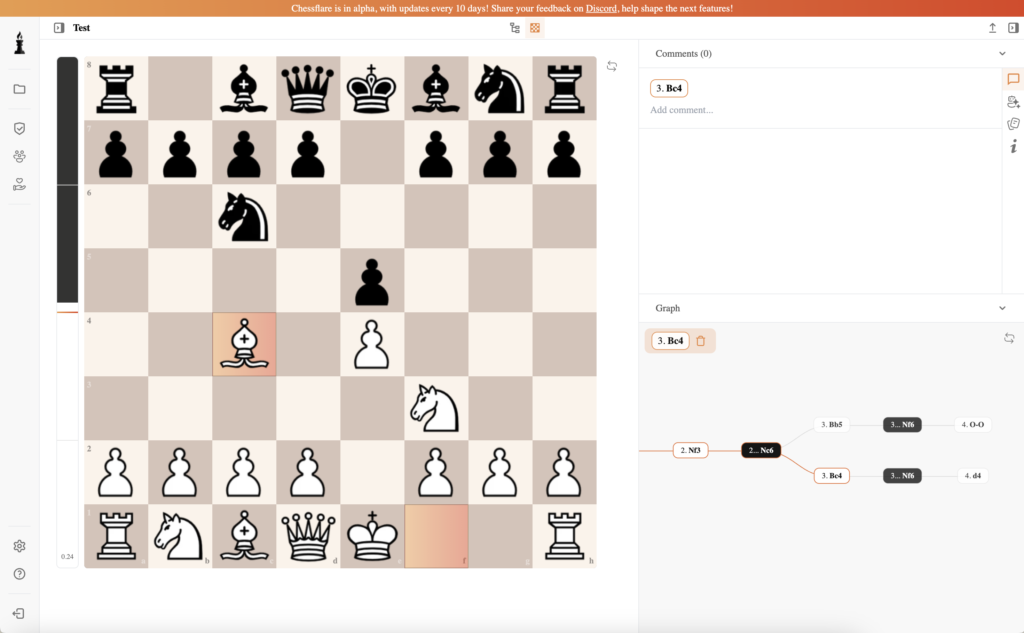The Classical School of chess emerged as a response to the Romantic era, prioritizing sound positional play, strategic planning, and defensive solidity over reckless aggression and speculative sacrifices. This school of thought was instrumental in shaping modern chess principles, emphasizing the importance of careful calculation, structured development, and long-term planning.
Origins and Philosophy
The Classical School began to take form in the late 19th century as players sought a more scientific and systematic approach to chess. This era was strongly influenced by Wilhelm Steinitz, the first official World Chess Champion, who pioneered the idea that chess was not just about rapid attacks but about accumulating small, strategic advantages.
The guiding principles of the Classical School were:
- Controlled Development: Every move should contribute to a clear, coherent plan.
- Strong Pawn Structures: A solid pawn foundation is critical for both attack and defense.
- Central Control: Controlling the center (especially squares e4, d4, e5, and d5) leads to superior positioning.
- Harmony of Pieces: Pieces should work together efficiently, rather than being used for speculative sacrifices.
- Sound Defensive Play: Defensive resources and prophylaxis (preventing opponent’s plans) are essential.
Key Openings of the Classical School
Unlike the Romantic School, which thrived on gambits and aggressive attacks, the Classical School preferred openings that prioritized stability, control, and positional depth. Some of the most characteristic openings of this era include:
Ruy-Lopez
One of the most fundamental openings in chess, the Ruy-Lopez (1.e4 e5 2.Nf3 Nc6 3.Bb5) follows classical principles by developing pieces harmoniously, controlling the center, and preparing for long-term positional advantages. This opening remains a staple of grandmaster play today.
Queen’s Gambit
The Queen’s Gambit (1.d4 d5 2.c4) is a strategic opening where White aims to control the center by offering a pawn. It embodies the Classical School’s philosophy of positional play and slow, methodical buildup.
Italian Game
The Italian Game (1.e4 e5 2.Nf3 Nc6 3.Bc4) is a balanced opening that allows for both tactical and positional play. Classical players often focused on maneuvering and long-term planning rather than immediate attacks.
French Defense
A solid choice for Black, the French Defense (1.e4 e6) is a prime example of the Classical approach, emphasizing a strong pawn structure, central control, and well-defined strategic goals.
The Pioneers of the Classical School
Several key figures helped shape the Classical School, introducing concepts that remain crucial in modern chess.
Wilhelm Steinitz
Wilhelm Steinitz was the father of modern chess strategy. He argued that attacks should only be launched when justified by positional advantages. His games demonstrated the power of defensive play, slow buildup, and methodical planning. His ideas laid the foundation for positional chess as we know it today.
Emanuel Lasker
Emanuel Lasker, World Champion for 27 years, was a master of psychology and strategy. He improved upon Steinitz’s principles by blending classical strategy with deep calculation and adaptability. His pragmatic approach allowed him to outplay opponents even in difficult positions.
José Raúl Capablanca
Capablanca, known for his effortless positional play and endgame mastery, epitomized the Classical School’s ideals. His games showcased clarity, efficiency, and an almost mechanical precision in improving positions without unnecessary risks.
Siegbert Tarrasch
A staunch advocate of Steinitz’s teachings, Tarrasch refined classical principles into practical guidelines. He emphasized activity, piece coordination, and the importance of central control, contributing significantly to the development of modern chess.
The Decline of Pure Classical Play
While the Classical School dominated much of the early 20th century, it eventually evolved with the introduction of more dynamic and hypermodern ideas. Players like Aron Nimzowitsch and Richard Réti challenged the rigid adherence to central occupation, introducing new strategic possibilities.
However, classical principles remain at the core of modern chess understanding. Players today still rely on fundamental Classical School teachings, blending them with more flexible and dynamic approaches.
Legacy of the Classical School
The Classical School’s influence can be seen in the structured approach of modern chess players. Positional play, strong endgame technique, and strategic maneuvering—all hallmarks of the Classical School—are essential in contemporary chess at all levels.
Many openings originating from this era remain the gold standard in professional chess, and studying the games of Steinitz, Lasker, and Capablanca continues to be invaluable for improving players. The Classical School serves as a bridge between the Romantic era’s adventurous play and the modern game’s balance of strategy and tactics.
Conclusion
The Classical School of chess revolutionized the game by shifting the focus from speculative attacks to structured, logical play. While chess has evolved to incorporate more flexible ideas, the core principles of the Classical School—center control, piece coordination, and strong defensive foundations—remain fundamental to success in chess today.

